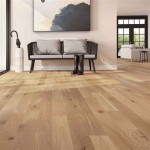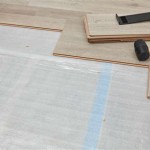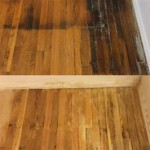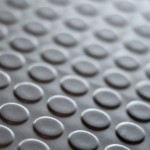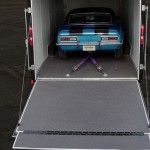Removing Scratches From Linoleum Flooring
Linoleum flooring, known for its durability and resilience, is a common choice in both residential and commercial settings. However, like any surface subjected to daily wear and tear, linoleum is susceptible to scratches. These blemishes can detract from the overall appearance of the floor, making it seem worn or neglected. Fortunately, various methods exist to effectively remove or minimize scratches on linoleum flooring, restoring its original look. The success of any scratch removal technique hinges on the severity of the scratch, the type of linoleum, and the tools and materials utilized.
Before embarking on any scratch removal process, it is imperative to identify the type of linoleum flooring installed. Genuine linoleum, composed of natural materials like linseed oil, resin, and wood flour, differs significantly from vinyl flooring, which is a synthetic product. Misidentifying the flooring material can lead to the use of inappropriate cleaning agents or techniques, potentially causing further damage. Linoleum typically has a matte or slightly textured surface, while vinyl often exhibits a smoother, more glossy finish. When in doubt, consult the manufacturer's documentation or a flooring professional.
Furthermore, assessing the severity of the scratch is crucial. Minor surface scratches, often caused by foot traffic or light abrasions, require less aggressive treatments than deeper scratches resulting from dragging heavy objects or sharp impacts. Attempting to repair a minor scratch with a technique designed for severe damage can unnecessarily compromise the floor's surface. Conversely, underestimating the depth of a scratch may lead to ineffective attempts at repair and prolong the restoration process.
Cleaning and Preparation
The initial step in any scratch removal endeavor involves thorough cleaning of the affected area. This removes any dirt, debris, or surface contaminants that could interfere with the repair process. Use a mild, pH-neutral cleaner specifically designed for linoleum floors. Avoid harsh chemicals, abrasive cleaners, or solvents, as these can permanently damage the linoleum surface. Dilute the cleaner according to the manufacturer's instructions and apply it to the scratched area with a soft cloth or sponge. Gently scrub the area to loosen any embedded dirt. Rinse the area thoroughly with clean water to remove any cleaner residue. Allow the floor to dry completely before proceeding to the next step.
For deeper scratches, a more intensive cleaning approach may be necessary. A solution of warm water and baking soda can be used to create a mild abrasive paste. Apply the paste to the scratch and gently rub it in a circular motion with a soft cloth. The baking soda acts as a gentle exfoliant, helping to lift dirt and debris from within the scratch. Rinse the area thoroughly with clean water and allow it to dry completely. Repeat this process as needed until the scratch is clean and free of any contaminants.
Once the area is clean and dry, inspect it carefully for any remaining debris or residue. A vacuum cleaner with a soft brush attachment can be used to remove any loose particles. Alternatively, a tack cloth can be used to wipe the surface and collect any remaining dust or debris. Ensuring a completely clean surface is essential for achieving optimal results with the subsequent scratch removal techniques.
Addressing Minor Scratches
For superficial scratches that are not deeply embedded in the linoleum, several methods can be employed to effectively minimize their appearance. Buffing is a common technique that involves using a soft cloth and a polishing compound to gently smooth the scratched area. Choose a polishing compound specifically designed for linoleum or resilient flooring. Apply a small amount of the compound to a clean, soft cloth and rub it onto the scratched area in a circular motion. Apply moderate pressure and continue buffing until the scratch begins to fade. Remove any excess polishing compound with a clean, damp cloth.
Another effective method for minor scratches is the use of a scratch concealer pen. These pens contain a colored pigment that matches the color of the linoleum floor. Apply the pen along the length of the scratch, filling it in with the pigment. Allow the pigment to dry completely according to the manufacturer's instructions. Once dry, use a soft cloth to gently buff the area and blend the pigment with the surrounding floor surface. This technique is particularly useful for concealing scratches that are noticeable due to a difference in color.
In some cases, applying a fresh coat of floor finish or polish can help to conceal minor scratches. Choose a floor finish that is specifically designed for linoleum flooring and apply it according to the manufacturer's instructions. This will create a uniform surface and help to blend the scratch with the surrounding floor. Before applying the finish to the entire floor, test it on an inconspicuous area to ensure that it does not affect the color or appearance of the linoleum.
Repairing Deeper Scratches
Deeper scratches that penetrate the surface of the linoleum require a more intensive repair approach. One common method involves using a color-matched linoleum repair paste or filler. These products are designed to fill in the scratch and create a smooth, even surface. Choose a repair paste that closely matches the color of the linoleum floor. Before applying the paste, clean the scratch thoroughly and remove any loose debris. Apply the paste to the scratch using a putty knife or small spatula, filling it in completely. Overfill the scratch slightly to allow for shrinkage during the drying process.
Allow the repair paste to dry completely according to the manufacturer's instructions. Once dry, use a fine-grit sandpaper to carefully sand down the excess paste until it is flush with the surrounding floor surface. Be careful not to sand too aggressively, as this can damage the linoleum floor around the scratch. After sanding, use a damp cloth to wipe away any sanding dust. Apply a small amount of color-matched linoleum sealer to the repaired area to protect it and blend it with the surrounding floor surface.
Another method for repairing deep scratches involves using a heat gun and a replacement piece of linoleum. This technique is more complex and requires careful execution to avoid damaging the floor. First, use a utility knife to carefully cut out the damaged area around the scratch, creating a clean, square or rectangular shape. Then, cut a replacement piece of linoleum that is slightly larger than the cutout. Use a heat gun to soften the adhesive on the underside of the replacement piece and carefully position it over the cutout. Use a roller or other flat object to firmly press the replacement piece into place. Allow the adhesive to cool completely before trimming any excess material with a utility knife. Seal the edges of the replacement piece with a color-matched linoleum sealer.
Choosing the correct repair method depends on the scratch's depth and whether a color-matched repair paste or filler is available. Using a colored pencil, color-matched to the flooring, to fill in the scratch before applying a sealer can help to minimize the visual impact of the damage.
Preventative Measures
While scratch removal techniques can restore the appearance of linoleum floors, preventing scratches in the first place is always the best approach. Implement several preventative measures to minimize the risk of scratches and maintain the floor's pristine condition. Place rugs or mats at entryways to trap dirt, debris, and moisture that could scratch the floor. Use furniture pads under the legs of all furniture to prevent scratches when moving or rearranging furniture. Avoid dragging heavy objects across the floor. Instead, lift them or use a dolly to move them safely.
Regular cleaning is crucial for preventing scratches. Sweep or vacuum the floor regularly to remove dirt, dust, and debris. Mop the floor with a mild, pH-neutral cleaner specifically designed for linoleum floors. Avoid using harsh chemicals, abrasive cleaners, or solvents, as these can damage the linoleum surface. When mopping, use a soft mop head and avoid using excessive water. Allow the floor to dry completely after mopping to prevent water damage.
Consider applying a protective coating of floor finish or polish to the linoleum floor. This will create a barrier that protects the floor from scratches, stains, and wear and tear. Choose a floor finish that is specifically designed for linoleum flooring and apply it according to the manufacturer's instructions. Reapply the finish periodically to maintain its protective properties. By implementing these preventative measures, the likelihood of scratches can be significantly diminished, preserving the flooring's aesthetic appeal and longevity.

How To Fix Scratches On Luxury Vinyl Floors

How To Remove Fix Scratches On Vinyl Floor Pvc Tiles Sheets

3 Common Vinyl Stains And Scratches How To Remove Them Weaver Carpets
How To Get Scratches Out Of Vinyl Flooring Quora

How To Repair Scratched Linoleum Marmoleum Flooring

How To Fix Scratches On Luxury Vinyl Plank Flooring Steps

How To Remove Scratches From Vinyl Flooring Floor Techie Wood Planks

How To Repair A Small Tear Scratch Or Gouge In Your Vinyl Floor

Repairing Linoleum Flooring Lance Roush Auctioneer Realtor Re Max 100 574 298 4527

Repairing Vinyl Flooring Diy Family Handyman
Related Posts


